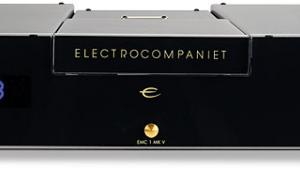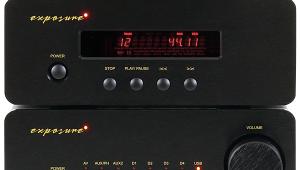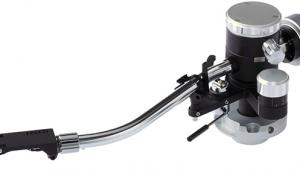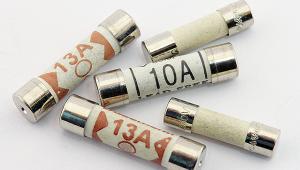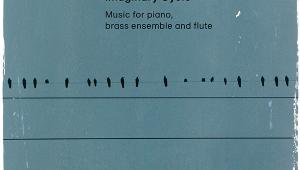Mcintosh Mcd301 (£4195)
It’s a fact that McIntosh gear has never been hugely popular this side of the Atlantic as its bold, retro styling appeals only to a minority of European consumers today. If you’re trying to integrate a high quality music system discreetly into a family-friendly living room it’s unlikely you’ll be shopping for a McIntosh. Which is something of a preamble to make the point that McIntosh’s latest MCD301 CD player is every bit a ‘big Mac’, sporting the marque’s traditional livery and looking as ‘macho’ as ever. It’s as American as a Hummer or a Harley alright.
The front panel looks wonderfully expensive with its high-quality gloss fascia and illuminated McIntosh insignia and weighs in at a reassuringly substantial 12.8kg. Both balanced and single-ended outputs are provided, a nice touch being the addition of variable outputs allowing direct connection to a power amp. Sometimes variable outputs can prove less transparent than fixed outputs, but I tried them and could hear no deterioration in sound quality whatsoever.
SHEER CLASS
The silver rotary knob on the right is the volume control when using the variable output(s), while the matching knob on the left acts as a ‘jog’ wheel for previous/next track selection. Track number, elapsed track time and total disc time remaining can be switched in the player’s left-hand display, but curiously not total elapsed time. The right-hand display shows volume setting (if you’re using it). To these eyes the green hue of the displays clash awkwardly with the different green hue of the illuminated McIntosh insignia. If one could adjust the brightness level or switch off the displays then the colour clash wouldn’t matter a jot. But you can’t.
Given the price tag you’d expect the build quality to ooze class and the MCD301 doesn’t disappoint. Fit and finish is excellent and internal build quality is simply gorgeous. Moreover the transport mechanism has a die-cast base and rigid, super-slim disc loading tray that glides in and out with a satisfying ‘swoosh’.
For those of an impatient disposition, the MCD301 is a trifle sluggish when loading and reading a disc’s table of contents. Skipping from track to track is slick enough for sure, but compared with most players at my disposal that load discs in the blink of an eye the MCD301 takes 10–12 seconds before the music starts when spinning up a disc. This goes for both CDs and SACDs and it’s frustratingly slow given the player’s beautifully slick tray mechanism.
I checked the ‘CD side’ of some DualDiscs and can report that they played perfectly, despite the caution in the McIntosh manual warning owners that playability of DualDiscs is not guaranteed due to its non-conformity to the Red Book standard.
RIGHT ON TARGET
The MCD301 was auditioned over several days through a variety of systems. Primarily my reference system comprised Townshend Audio electronics coupled with Glastonbury 3 loudspeakers, the system wired throughout with Townshend’s DCT interconnects and impedance-matched speaker cables. Further auditioning and experimentation was done in a listening room at Grahams Hi-Fi in North London where I had the pick of everything in the store. I enjoyed listening to a variety of Naim amplifiers (both integrated and pre/power) and switched between some compact Epos bookshelf speakers and more substantial Epos floorstanders with highly enjoyable results all round. (Sincere thanks are due to Paul and Connor at Grahams Hi-Fi.)
When viewed in the context of its target audience there’s little one can fault in the McIntosh MCD301’s presentation of the music. However, for audio enthusiasts who own the very best high-end components which allow them to enjoy the highest degree of resolution, it may not quite cut the mustard. An excellent, simple recording of cello and piano recorded in a natural acoustic featuring Richard Harwood playing a selection of Chopin and Beethoven sonatas released last year [EMI Classics 094635964523] revealed an excellent sense of space and ‘occasion’ via the MCD301. Yet the McIntosh failed to delineate fully the left and right hand of the piano during intense passages, where a little blurring of the piano was clearly evident compared with the Townshend TA565 player used as a reference.
Listening through the Naim/Epos system, and the recording of ‘My Love Is’ from Dianna Krall’s Love Scenes album [Impulse IMPD2230] showed a clean, fast, pristine quality to the stark string bass and piano intro, with just the right balance of bass weight and ‘snap’. (This disc is also available on SACD and DVD-Audio.) In some respects, feeding the MCD301 into a Naim NAC202/NAP200 pre/power in place of a Naim CDS3/XPS2 gave a faster, subjectively more ‘boppy’ rendition of this rhythmic track, which really says something given the Naim’s rhythmic/musical reputation.
The MCD301 proves to be a highly musical performer notwithstanding that here it was being compared against a seriously gorgeous, circa £9000 two-box player. Furthermore, in fine American high-end tradition, the MCD301 projects a stadium-wide soundstage when given the opportunity with commensurate recordings. SACD showed CD a clean pair of heels with some discs (as is usually the case) but, as ever, is dependent entirely on the fidelity of the original recording.
SET AND MATCH
As with so many high-end components from brands with individual/idiosyncratic styling, only McIntosh system owners are likely to put the MCD301 into their systems. Unless, of course, one falls in love with the sound and styling of the MCD301 so much that one decides to replace the rest of one’s electronics with a complete McIntosh system to match it. Doubtless this would ensure best performance, too, allowing for balanced operation throughout the system chain and seamless interoperability using one remote control handset.
VERDICT
The MCD301 is no audiophile slouch and it holds its own against the majority of similarly-priced audiophile players. Clearly it can be heartily recommended to McIntosh amplifier owners worldwide. How well the MCD301 might perform in your system will depend on the character and resolution of your amplifiers and speakers. Such is hi-fi... and much will depend on taste.
Originally published in the October 2008 issue









